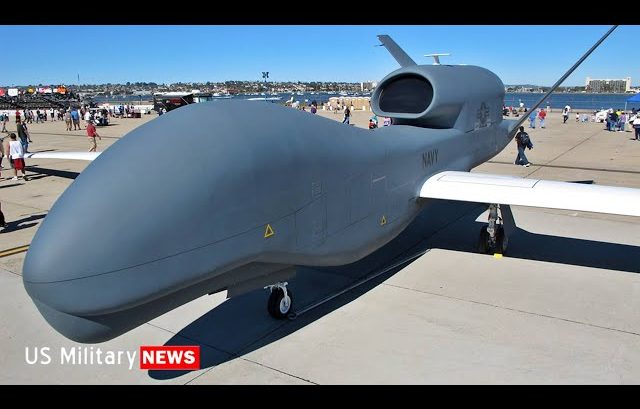The RQ-4 GLOBAL HAWK is the US’ biggest unmanned aerial vehicle, and the Air Force’s go-to eye in the sky.
It’s a high altitude long endurance and remotely piloted aircraft featuring an integrated sensor suite that gives an all-weather, day or night intelligence, surveillance, and reconnaissance also known as ISR capability.
Specifications
The fuselage uses aluminum semi-monocoque construction with a v-tail. The wings are made of composite materials.
The plane is also powered by an Allison Rolls-Royce F137-RR-100 turbofan engine with 7,600 pound-force thrust and carries a payload of 3,000 pounds. It’s designed to fly at altitudes up to 60,000 feet.
Why does the USAF Love the Global Hawk?
A Global Hawk can get crucial time-sensitive data and network the intelligence surveillance and reconnaissance ISR data to several assets like an Air Force joint surveillance target attack radar system.
A HAWK with Global Reach
The HAWK first entered service in 2001 just in time to be deployed to Afghanistan. It was the first unmanned aircraft to ever cross the Pacific and later set a 34.3-hour flight endurance record.
Observation Equipment
The plane forgoes weapons for numerous observation equipment including a synthetic aperture radar used on moving airborne platforms creating high-resolution 3D images.
Additionally, it’s also equipped with an electro-optical infrared camera allowing day and night observation capability.
Global Hawk Retirement
The successor to the RQ4 Global Hawk should be available for service later in this decade, according to Lieutenant General David S. Nahom, Air Force Deputy Chief of Staff for Plans and Programs told the Senate Appropriations Committee.



